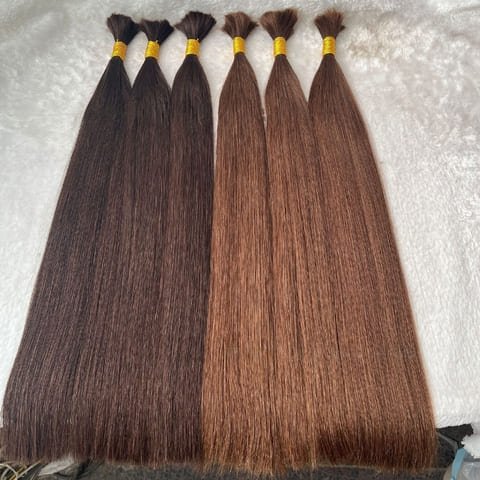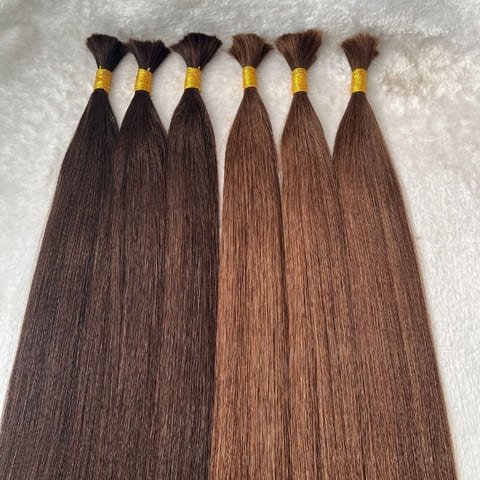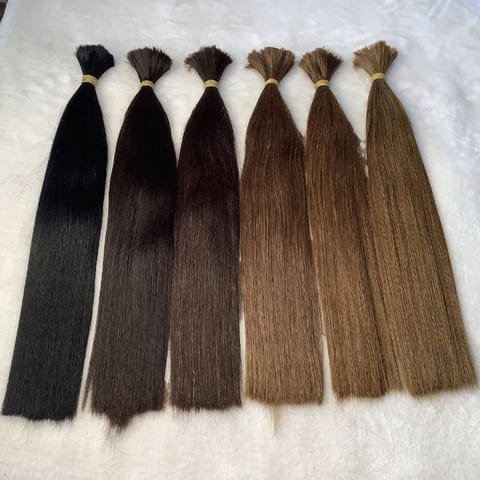Here are some steps to consider when starting a hair business:
1. Research your market: Before starting any business, it’s crucial to research your target market thoroughly. Identify the types of hair products your potential customers are interested in, and what their needs and preferences are.
2. Develop a business plan: A business plan should outline your business goals, strategies, and financial projections. It’s a crucial document that will help you stay focused and organized as you build your hair business.
3. Choose your hair products: Decide which types of hair products you want to sell, such as wigs, extensions, weaves, or hair care products. Make sure to choose high-quality products that are in demand.
4. Find suppliers: Once you’ve decided on the types of hair products you want to sell, research and find reputable suppliers. You can attend trade shows, connect with manufacturers online, or partner with local distributors.

5. Register your business: Register your hair business with the appropriate government agencies, obtain any required licenses and permits, and register for taxes.
6. Create a website and social media presence: A website is essential for any business, and it’s a great way to showcase your hair products and services. Consider creating social media accounts to increase your online presence and connect with potential customers.
7. Launch your business: Host a launch event to introduce your hair business to the public. Offer discounts and promotions to attract customers and generate buzz.
Starting a hair business takes time and effort, but with a solid business plan and strategy, it can be a successful venture.
how to research hair market
When researching the hair market, it’s important to gather as much information as possible about your target audience, competitors, and industry trends. Here are some steps you can take to research the hair market:
1. Identify your target audience: Determine the demographics of your target audience, including age, gender, ethnicity, and income level. Find out their hair care habits, what products they use, and what their pain points are.

2. Analyze the competition: Identify your main competitors in the hair market and analyze their products, pricing, marketing strategies, and target audience. Look for gaps in the market that you can fill with your products and services.
3. Attend industry events and conferences: Attend trade shows, conferences, and events related to the hair industry. These events provide an opportunity to network with industry professionals, learn about the latest trends and innovations, and gather market intelligence.
4. Conduct online research: Use search engines, social media, and industry blogs to gather information about the hair market. Look for customer reviews, forums, and discussion boards to learn about customer preferences and pain points.
5. Conduct market surveys: Conduct surveys with your target audience to gather insights about their hair care needs, preferences, and purchasing behavior. You can use online survey tools or hire a market research company to conduct surveys on your behalf.
6. Use market research reports: Market research reports provide valuable insights into the hair market, including market size, growth trends, key players, and consumer behavior. You can purchase reports from market research companies or access them through your local library.
By taking these steps, you can gather valuable information about the hair market that can help you make informed decisions about your hair business.

how to develop a plan for hair busiess
Developing a plan for your hair business is an essential step to ensure that you have a clear direction and strategy for achieving your goals. Here are some steps to consider when developing a plan for your hair business:
1. Define your business goals: Start by defining your business goals and objectives. For example, your goals could be to generate a certain amount of revenue, increase your customer base, or launch a new product line.
2. Conduct a SWOT analysis: A SWOT analysis helps you identify your business’s strengths, weaknesses, opportunities, and threats. This analysis will help you to understand your business’s internal and external environment and develop strategies to capitalize on its strengths and opportunities while mitigating its weaknesses and threats.
3. Define your target market: Identify your target market and develop a customer profile. This will help you understand your customers’ needs, preferences, and behavior and develop products and marketing strategies that appeal to them.
4. Develop a marketing plan: A marketing plan outlines how you will promote your hair business to reach your target audience. It should include a description of your target audience, your unique selling proposition, pricing strategy, promotional tactics, and sales channels.
5. Develop a product and service strategy: Define your hair products and services and how they will meet your target audience’s needs and preferences. Identify the features and benefits of your products and services, pricing strategy, and distribution channels. hair extensions suppliers wholesale
6. Develop a financial plan: Develop a financial plan that outlines your business’s revenue and expenses, cash flow projections, and funding requirements. This plan should include a detailed budget, sales forecasts, and profit and loss statements.

7. Set milestones and timelines: Set milestones and timelines to track your progress towards achieving your goals. This will help you stay on track and adjust your strategy if necessary.
By following these steps, you can develop a comprehensive plan for your hair business that will help you achieve your goals and grow your business. i tip hair extension distributors wholesale
how to choose hair products for selling business
Choosing the right hair products to sell in your business is crucial to your success. Here are some steps to consider when selecting hair products for your selling business:
1. Identify your target market: Before choosing hair products, identify your target market. Determine the demographics, lifestyle, and hair care needs of your target audience. This will help you choose products that appeal to them.
2. Evaluate the market demand: Determine the market demand for hair products. Research the latest trends, popular brands, and consumer preferences. This will help you understand what products are in demand and what products you should consider selling.
3. Consider your niche: Consider your niche and what products will complement your brand. For example, if you specialize in natural hair care, you may want to sell products that are organic or free of harmful chemicals.

4. Look for high-quality products: Choose high-quality hair products that are effective and safe to use.
5. Check the manufacturer’s reputation: Research the manufacturer’s reputation and history. Look for reviews and testimonials from other businesses that have used their products. This will help you determine the manufacturer’s reliability and the quality of their products.
6. Evaluate the pricing: Consider the pricing of the hair products. Look for products that are competitively priced and offer value for money. Keep in mind that the pricing should be consistent with your target market’s purchasing power.
7. Consider the packaging and branding: Consider the packaging and branding of the hair products. Look for products with attractive and informative packaging that will appeal to your target audience. Additionally, consider products with strong branding that will help you differentiate your business from competitors.

By following these steps, you can choose the right hair products to sell in your business that will appeal to your target market, meet their needs, and help grow your business.
how to find wholesale hair suppliers
Finding wholesale hair suppliers can be a challenging task, but here are some steps you can take to help you find reliable and high-quality hair product suppliers:
1. Attend hair industry events: Attending hair industry events such as trade shows and conferences can be an excellent way to meet suppliers and manufacturers. You can network with industry professionals and learn about the latest trends and innovations in the hair industry.
2. Search online directories: Online directories such as Alibaba, Made-in-China, and Global Sources can help you find hair suppliers. These directories offer a comprehensive list of suppliers and allow you to filter your search based on product type, location, and certification.
3. Use social media: Social media platforms such as LinkedIn and Instagram can help you find hair suppliers. You can search for suppliers, connect with them, and learn more about their products and services.
4. Search for wholesale marketplaces: Online wholesale marketplaces such as DHgate, AliExpress, and Amazon Wholesale can help you find hair suppliers. These platforms offer a wide range of hair products, and you can filter your search based on product type, price, and location.

5. Ask for referrals: You can ask for referrals from other businesses in the hair industry. Reach out to other businesses, network, and ask for recommendations on suppliers they have worked with in the past.
6. Conduct online research: Conduct online research by searching for hair suppliers on search engines such as Google and Bing. Look for suppliers with high ratings, positive reviews, and a track record of delivering high-quality products.
By following these steps, you can find reliable and high-quality wholesale hair suppliers for your business. It’s essential to conduct due diligence and research potential suppliers thoroughly to ensure that they meet your requirements and standards.




